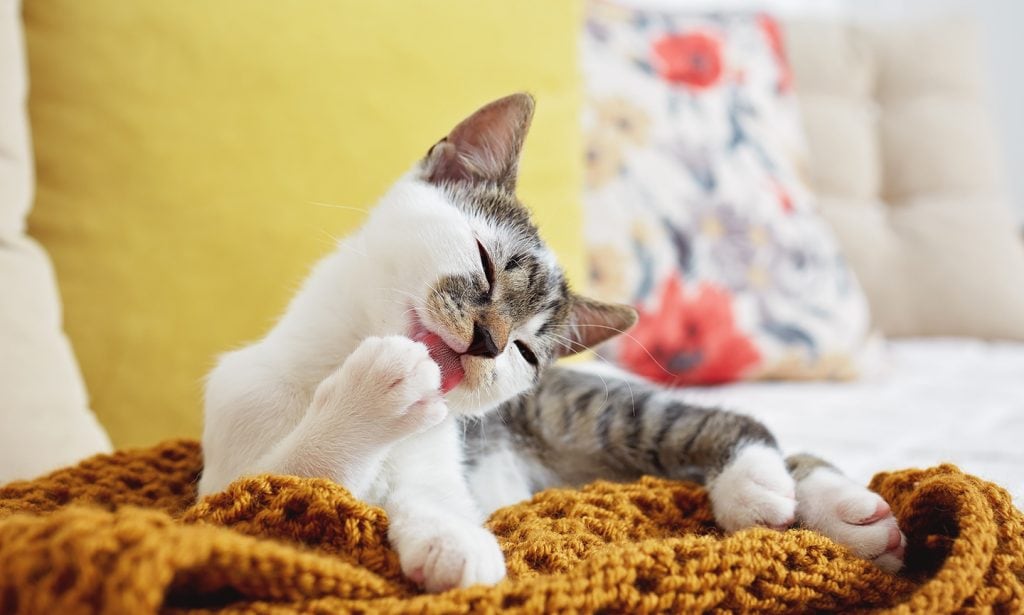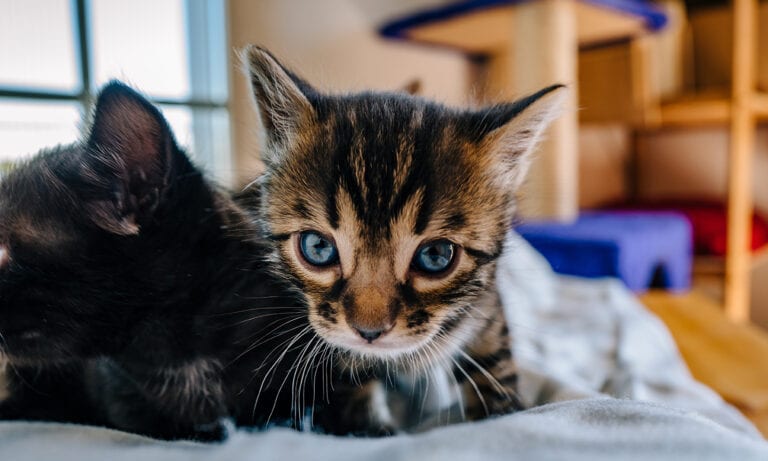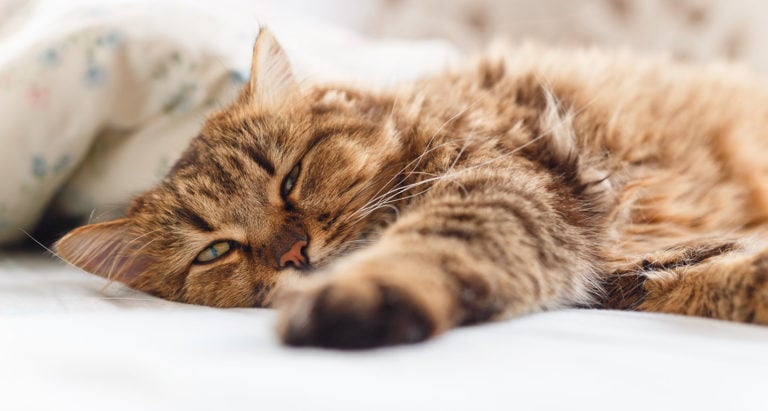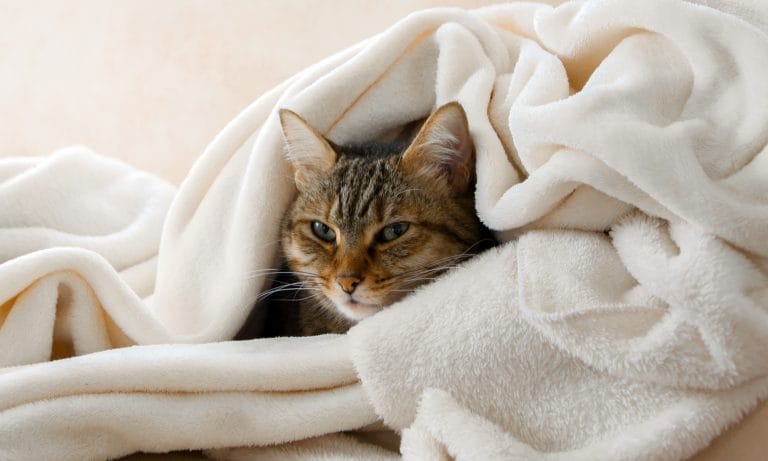That first time seeing and hearing your cat hack up a hairball is pretty jarring, and it certainly doesn’t get any less weird to witness over time. While they’re considered a “common” part of a kitty’s life, cat hairballs are not “normal.” Leveraging insight from Dr. Erin Katribe, DVM, medical director for Best Friends Animal Society, we’re examining:
- What cat hairballs are
- Which kitties are more likely to get them
- What steps you can take to prevent future hairballs
- When to consult your vet
What Are Cat Hairballs (Besides Gross)?
Hairballs refer to a tubular-shaped, dense wad of soggy hair that cats throw up. Doing so usually is a full body effort and can elicit some highly unpleasant sounds. So, what’s happening physiologically to a cat’s body when they’re “hacking up a hairball?”
“[When cats groom], they will normally ingest some amount of hair in that process. That hair typically passes through their gastrointestinal tract and is passed in feces,” says Dr. Katribe. “In some situations, either there is too much hair being ingested to move through or something is causing the hair to be unable to pass.”
That’s when a hairball is formed. The hair gets trapped and slowly collects in the cat’s body until there’s no other option but for them to expel it via vomiting.
Do All Cats Get Hairballs?
While its possible that most cats will experience the misery of hairballs at some point during their lifetime, cats with medium to long hair are more likely to experience hairballs than their short-haired friends. Felines with underlying problems (such as anxiety) that cause overgrooming and cats with intestinal issues or certain diseases are also at greater potential risk for developing hairballs.
So, Are Hairballs Normal?
No. Just because something happens commonly, that doesn’t necessarily mean it’s considered “normal.” This is true of cat hairballs. The more frequently hairballs are occurring, the more concerned a cat owner should be. If it’s a daily or even weekly occurrence, this warrants veterinary attention.
Other red flags that warrant a call to the vet can include:
- Weight loss
- Decreased appetite
- Decreased activity
- Evidence of excessive grooming (such as hair loss or skin damage)
Excessive grooming can stem from numerous causes, such as an allergy, anxiety/behavioral disorders, fleas and other parasites or pain. Frequent hairballs can also be a sign of gastrointestinal disease or inadequate hydration.
Sometimes, a cat coughing is mistaken for attempting to bring up a hairball. After an extensive coughing episode, cats may then gag up a small amount of fluid—and potentially hair—from the stomach, making it even harder for an owner to interpret.
“If you observe what you think might be a hairball episode in your cat, try to capture a video to share with your vet, as this can help them determine what’s actually going on,” advises Dr. Katribe. “Coughing in cats can be a sign of asthma or a respiratory infection, which warrants prompt veterinary attention to prevent escalation into an emergency situation.”
Even if infrequent, pet parents should discuss the issue of hairballs with their veterinarian and also take steps to try to get ahead of the problem with prevention methods and cat hairball remedies which we will detail here.
How Can I Prevent Cat Hairballs?
- Brush regularly: One of the best ways you can help reduce or prevent hairballs is to be your cat’s ever-dutiful grooming assistant by regularly brushing them. After all, what ends up in that deshedding brush won’t end up being ingested. Learn some cat grooming tips here.
- Curb excessive grooming: You can also try to curb excessive grooming habits by interrupting their cleaning sessions with play time—time to break out the teaser toy!
- Consult with your vet and make a plan: Not only can your vet rule out or address underlying causes, but they can also provide customized recommendations for over-the-counter hairball diets or treatments (more on those below). These products provide mechanical assistance via lubrication or fiber that lend a helping hand to your cat’s digestive tract.
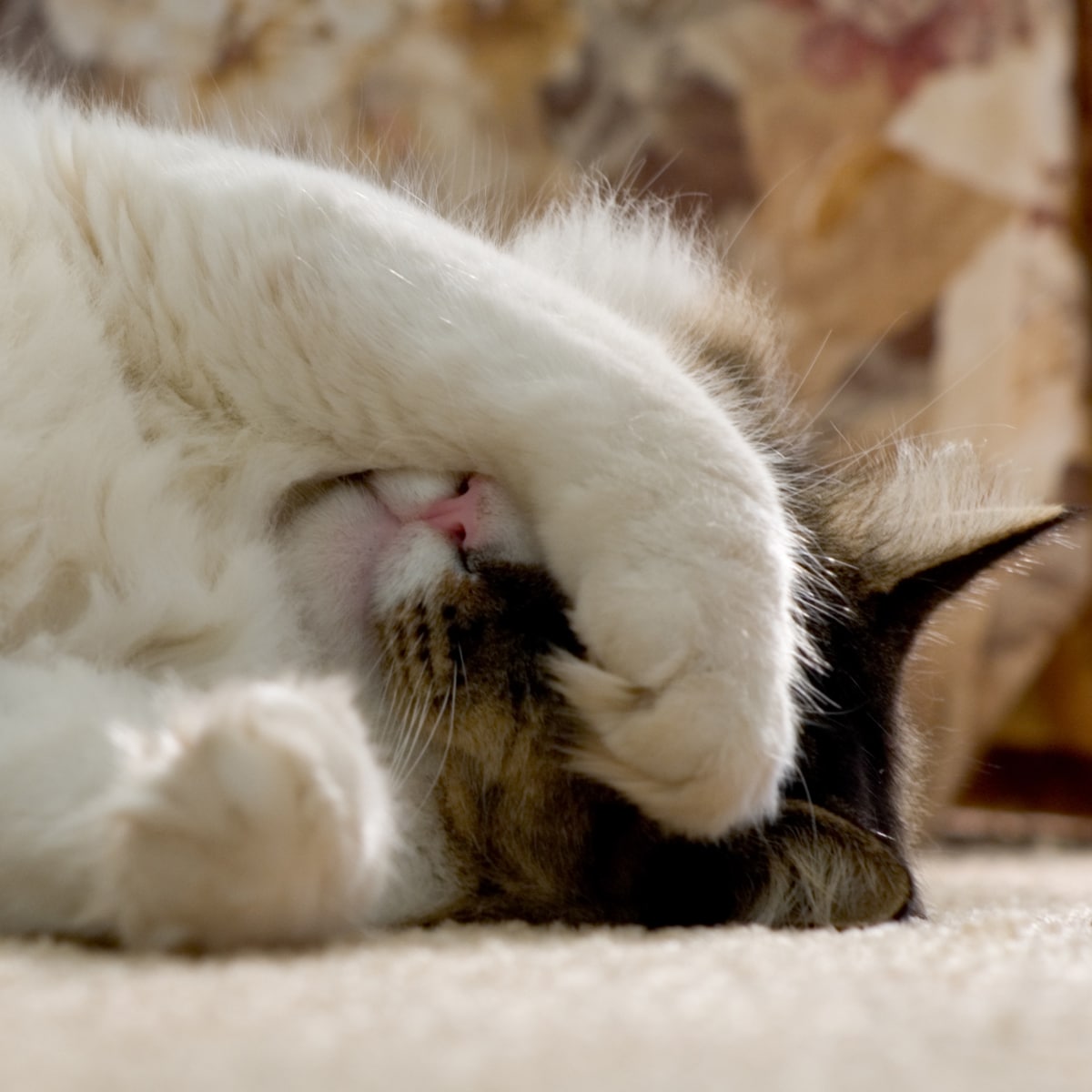
What Are the Best Cat Hairball Remedies to Try?
There are a few different types of cat hairball remedy food and supplements pet parents can try:
- Oil or petroleum-based laxative that helps support general digestion. Essentially, these help hairballs to pass more easily through your cat’s system. Examples include:
- Cat Lax Cat Supplement, which is made with cod liver oil and petroleum.
- Tomlyn Laxatone Hairball Remedy Tuna Flavor Gel Cat Supplement, which is formulated with white petroleum, mineral oil and syrups. These are administered in small quantities on an as-needed basis.
- Other supplements and diets specially formulated for cats who suffer from frequent hairballs. These may contain digestive aids like fiber to support the intestinal tract and keep things moving or provide ingredients that support a healthy haircoat, like omega fatty acids, in order to reduce ingested hair. Examples include:
- Greenies Feline SmartBites Hairball Control Tuna Flavor Cat Treats, which are formulated with plant-based fiber.
- Fiber-dense Iams ProActive Health Indoor Weight & Hairball Care Dry Cat Food, which can be fed in lieu of your cat’s regular cat food. (Learn how to switch your cat’s food here.)
Your veterinarian should be looped into making the decision to give your cat hairball supplements or foods. They’ll want to rule out any underlying issues and provide you with additional ways to reduce your cat’s hairballs.
While hairball food and dietary supplements can help, it’s important to note that they’re often only addressing the symptom—not the underlying cause of your cat’s hairballs. Dr. Katribe says, “If we can determine a reason for overgrooming or decreased stomach and intestinal motility and address it, that’s preferred over just treating the symptom.”
When to Call Your Vet
There’s no need to immediately panic if your cat has hairballs. With that said, make your vet aware of your cat’s hairballs. They’ll likely want to know the frequency, any potential triggers and what your cat’s current grooming habits are like.
“I always advise every cat owner to seek veterinary attention sooner rather than later if something is amiss,” says Dr. Katribe. “We have a much better chance of catching illness early and keeping cats healthy that way.”
Our kitties may have a reputation for hacking up hairballs, but the more we can do to prevent this from occurring, the better quality of life they’ll have.
There are no “stupid” questions when it comes to your pet’s health. If you suspect your pet is sick, please call your vet immediately. For health-related questions, always consult your regular veterinarian when possible as they can make the best recommendations for your pet. (If you need help finding a vet near you use this link.)
Share:
